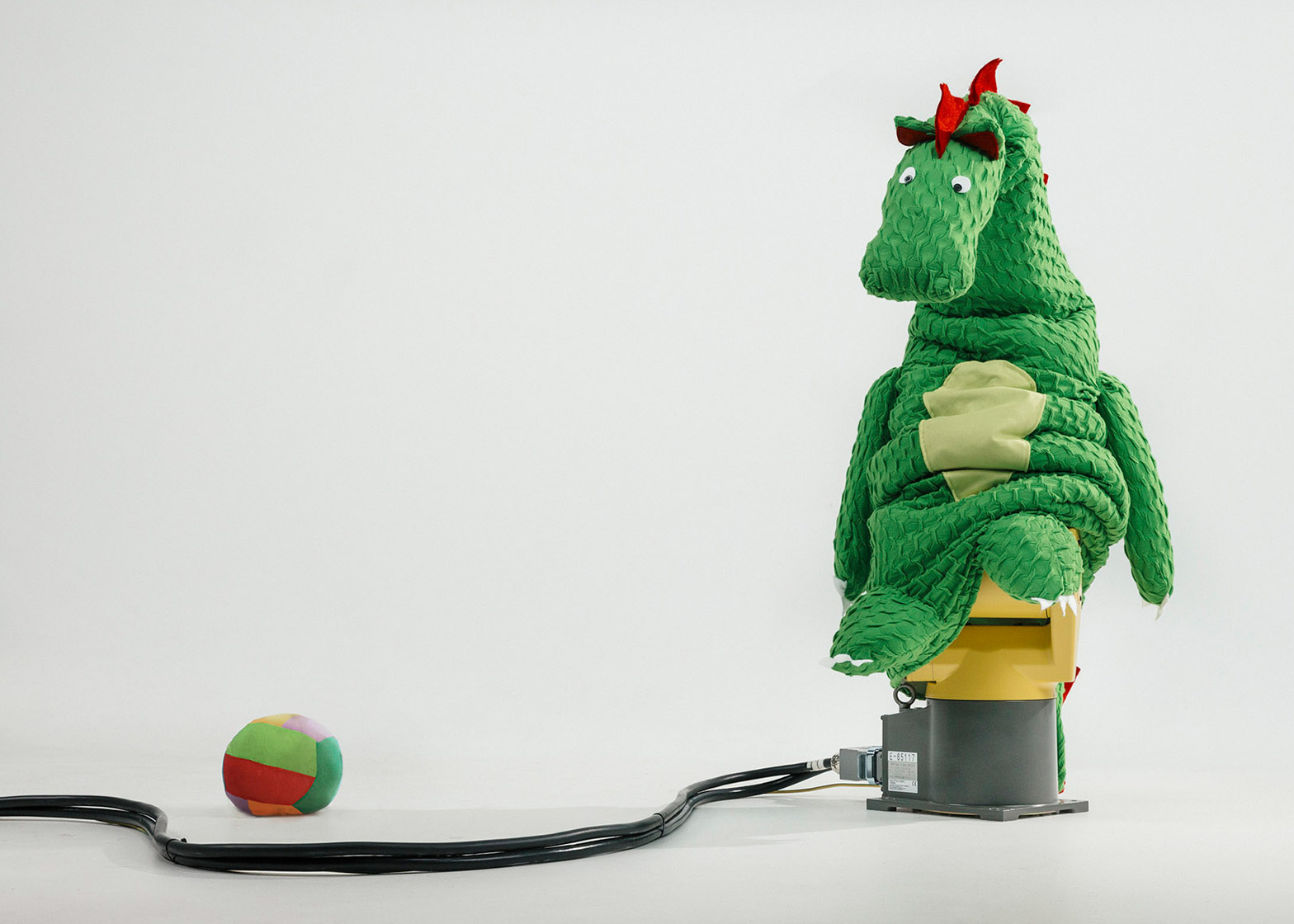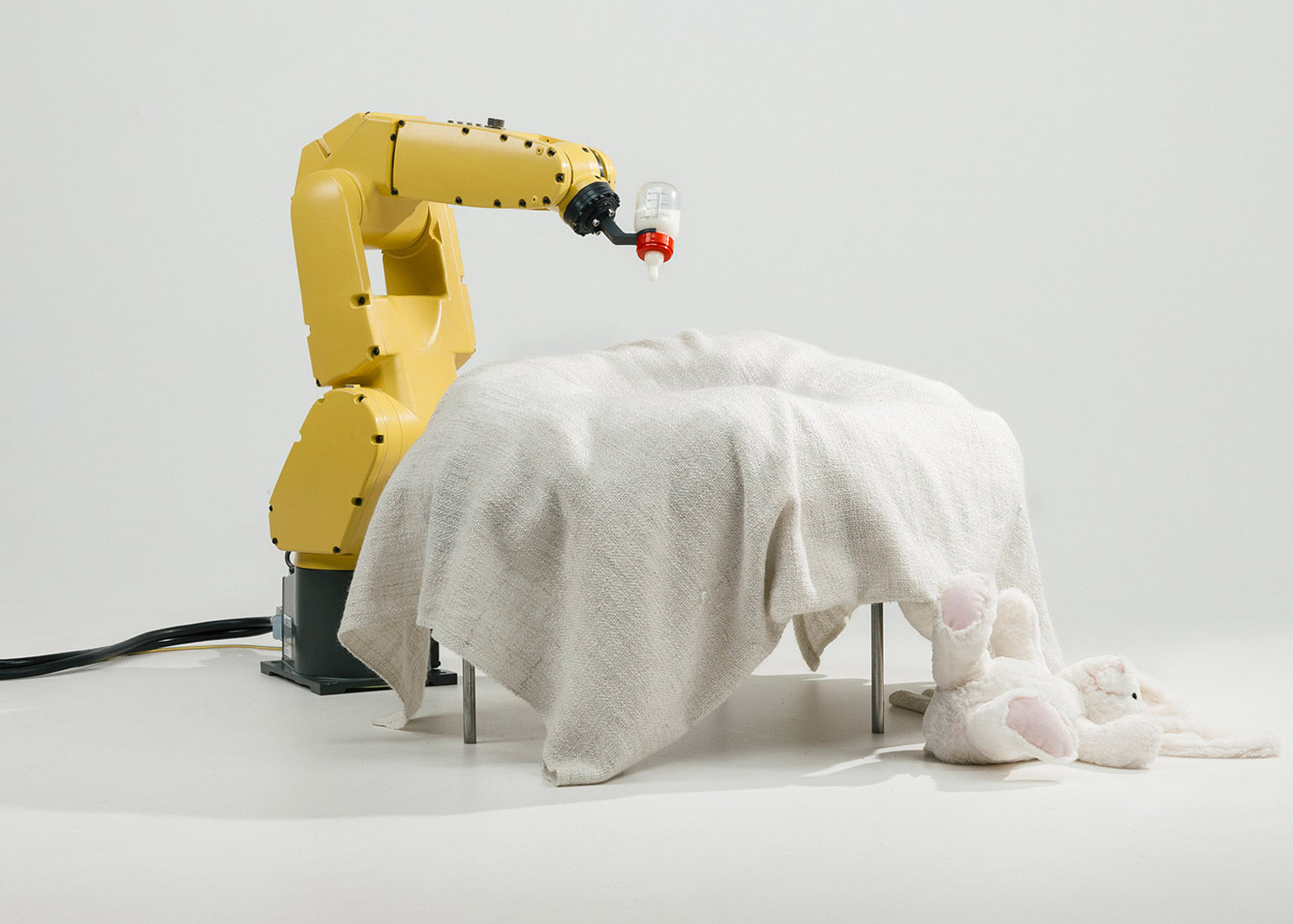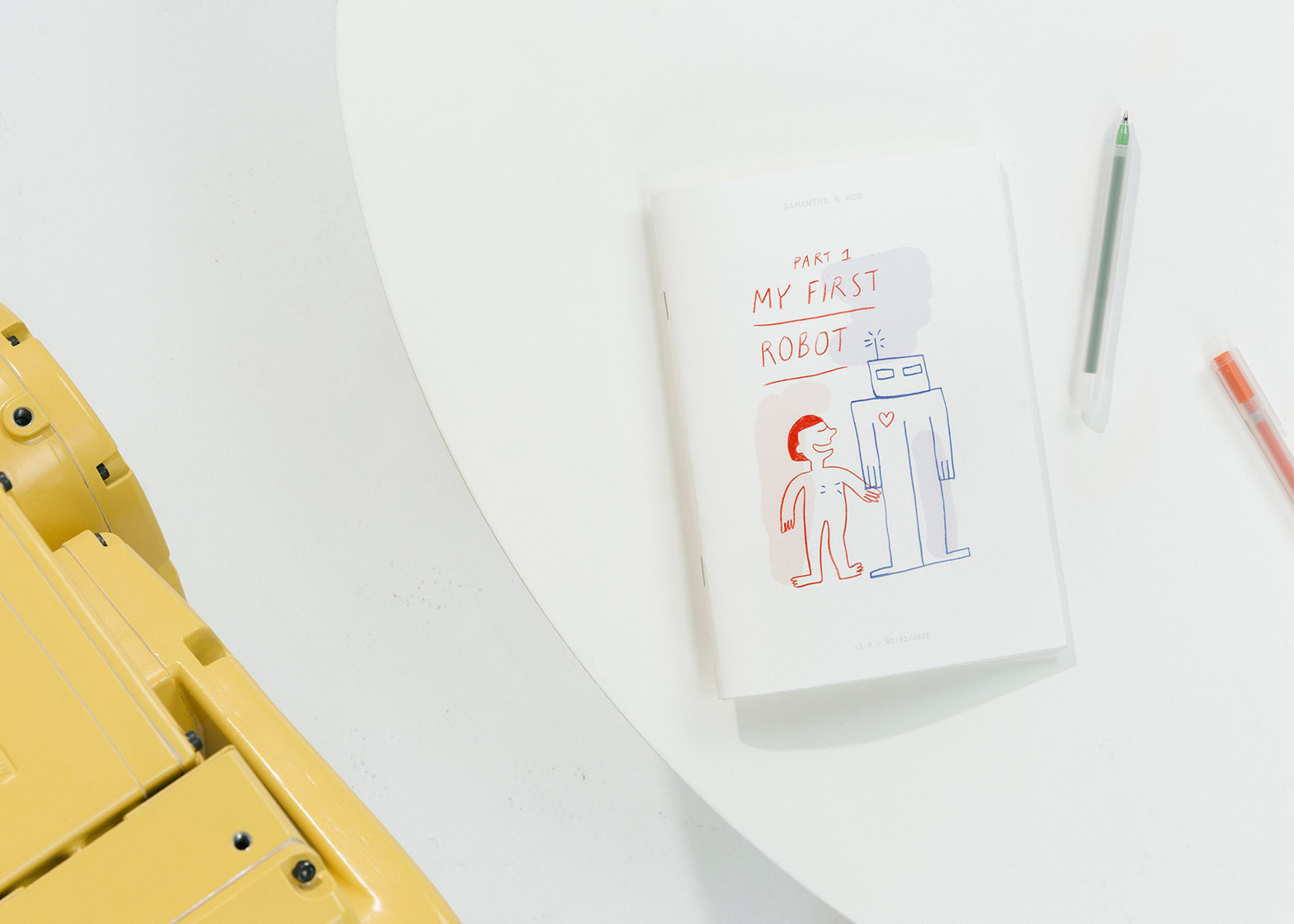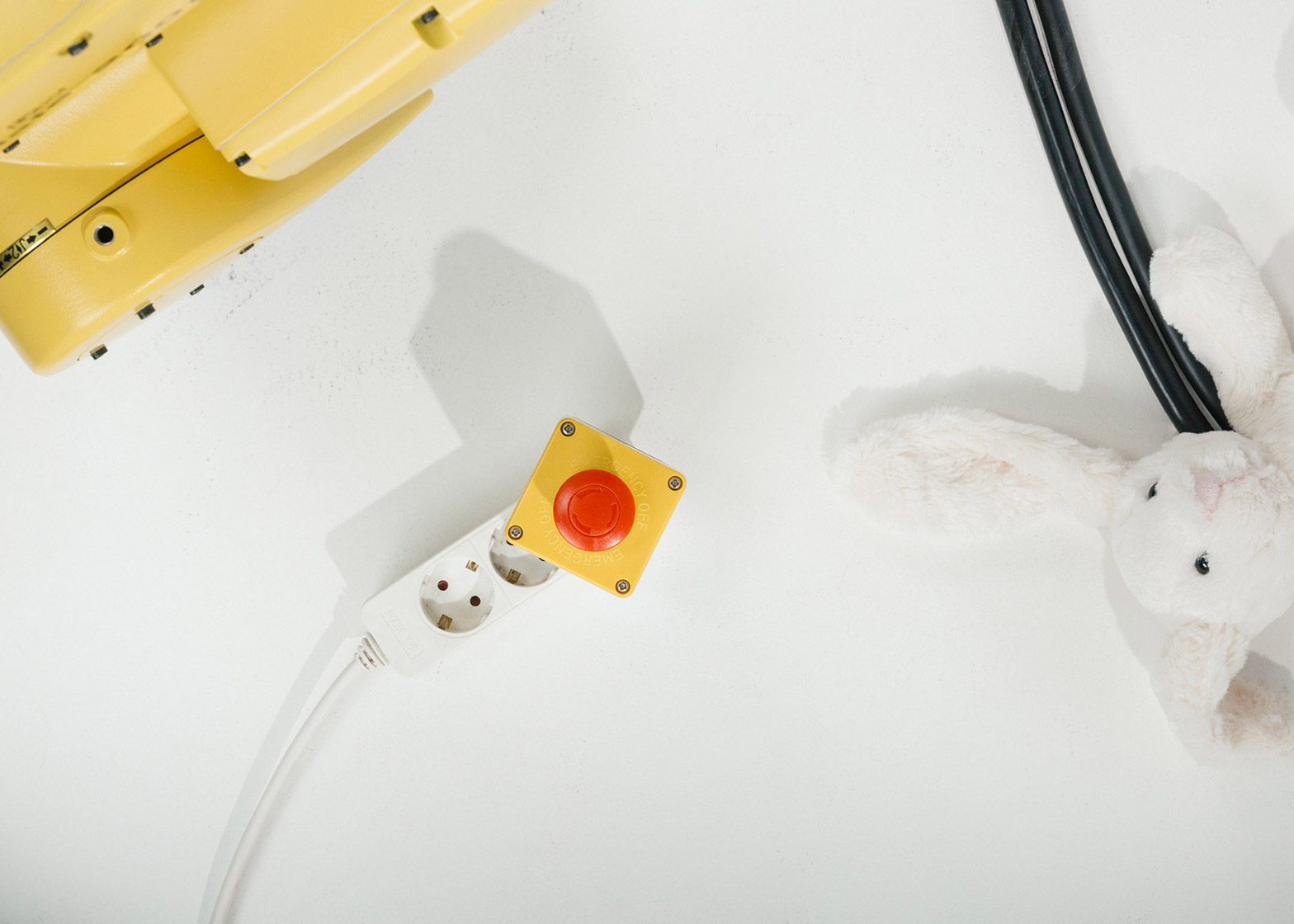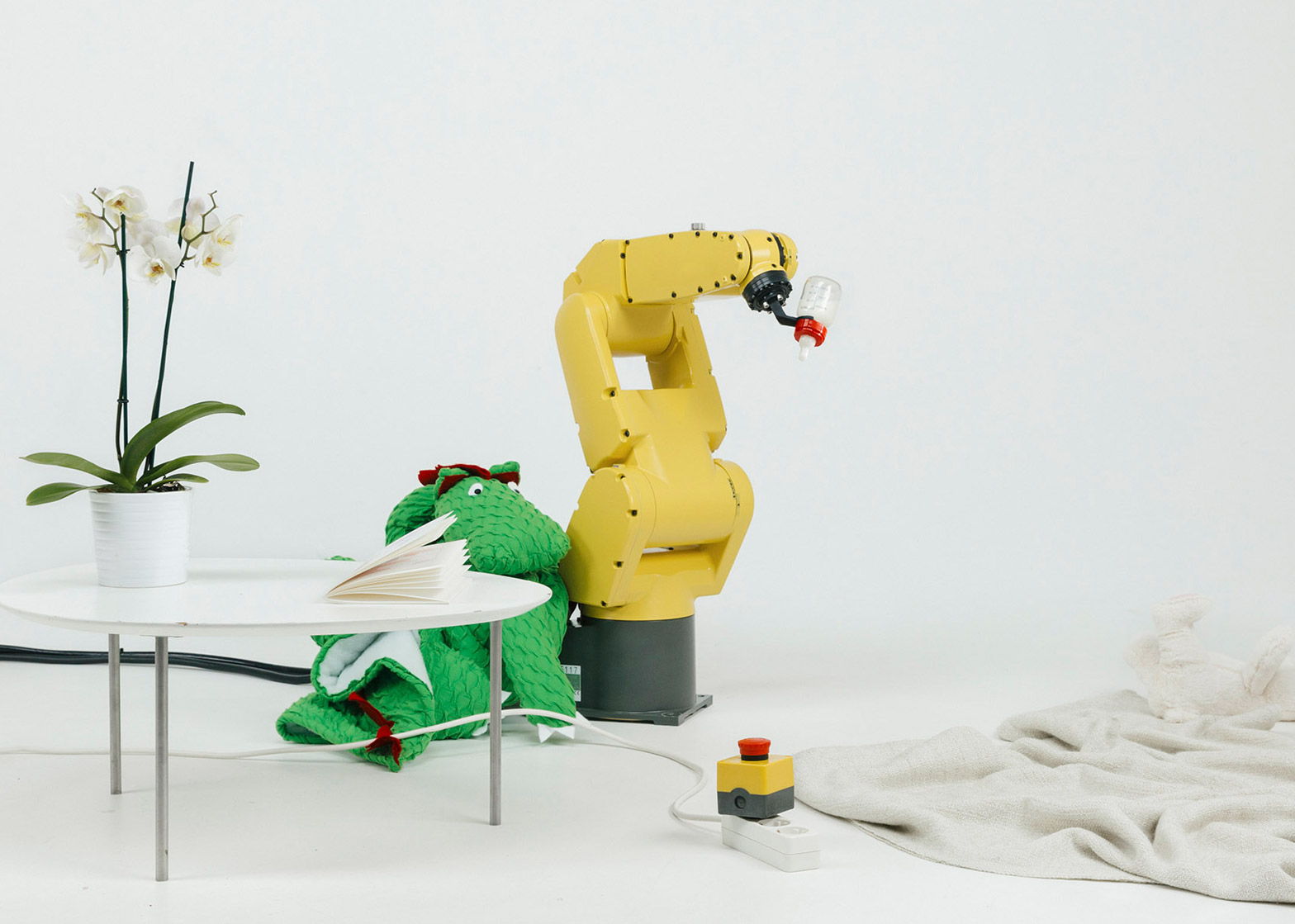A mechanical babyfeeding arm and a soft dragon costume are among this collection of products, designed by a trio of students to help the next generation adapt to the presence of robots (+ slideshow).
Stephan Bogner, Philipp Schmitt and Jonas Voigt from Germany's University of Design Schwaebisch Gmünd designed four conceptual objects that address safety in the home, as well as the perceived social status of bionic beings.
Each of the Raising Robotic Natives accessories is created for a future when robots are essential in people's homes and lives, particularly as production volumes increase and prices fall.
The Robot Baby Feeder Toolhead is a bright yellow mechanical arm that can hold a baby bottle to feed a small child, saving parents 15 to 30 minutes per bottle, according to the designers.
Other robots could be made less intimidating with the use of the Dragon Costume, which can be pulled over a robotic arm like a sock, transforming it into a softer and more approachable toy.
The Living Room Kill Switch anticipates a robot-related emergency, and features a bright red button that can be plugged into a power socket and pressed to trigger a short circuit that will shut down all electricity.
"The Living Room Kill Switch satisfies an increasing need for security," said the students. "Being that robots are devices traditionally reserved for the workshop and factory, at home it gives the feeling of unease, reminding of us of the possible dangers these machines once posed."
The designers suggest that future regulations will mean that these kinds of kill switches will become as essential as smoke detectors are currently.
"People are already Roomba-proofing their homes," they added, referring to the robot vacuum cleaners that were previously programmed to perform a waltz for an installation in Belgium.
"Likewise the Kill Switch poses questions about the aesthetics of the robotic home before we arrive at sophisticated, two-legged robots that can interact with the world just like humans do."
The team has also developed educational material for children, in the form of the My First Robot book, illustrated by Margot Fabre.
This introduces readers to the history of robotics, as well as explaining science fiction author Isaac Asimov's Three Laws – a fictional set of guidelines created by the writer in the 1940s to protect humans from harm.
"The book raises the question about the necessity of school education in robotics, similar to coding initiatives today," said the students.
"When do we need to start teaching children about robots? Will education of automation technology ultimately lead to a competitive advantage for nations or undermine economies?"
"Through constant robotic interactions and formalised education, robotic natives get to think differently about robots than we do," they added. "It will be their responsibility to shape the future of robotics, not ours – besides we're robotic immigrants, after all."
All instructions for making these objects – except the Kill Switch – are available online, and the children's book is freely available on Issuu.
Robots are already being used in the world of architecture. A mechanical arm was deployed to build a wooden barn in Dorset earlier this year, and a robot-fabricated pavilion was proposed by architect Achim Menges for the V&A Museum's courtyard in London.
Robotic transportation also made an appearance at CES 2016, in the form of a personal device designed by Segway that is part hoverboard and part bionic butler.

